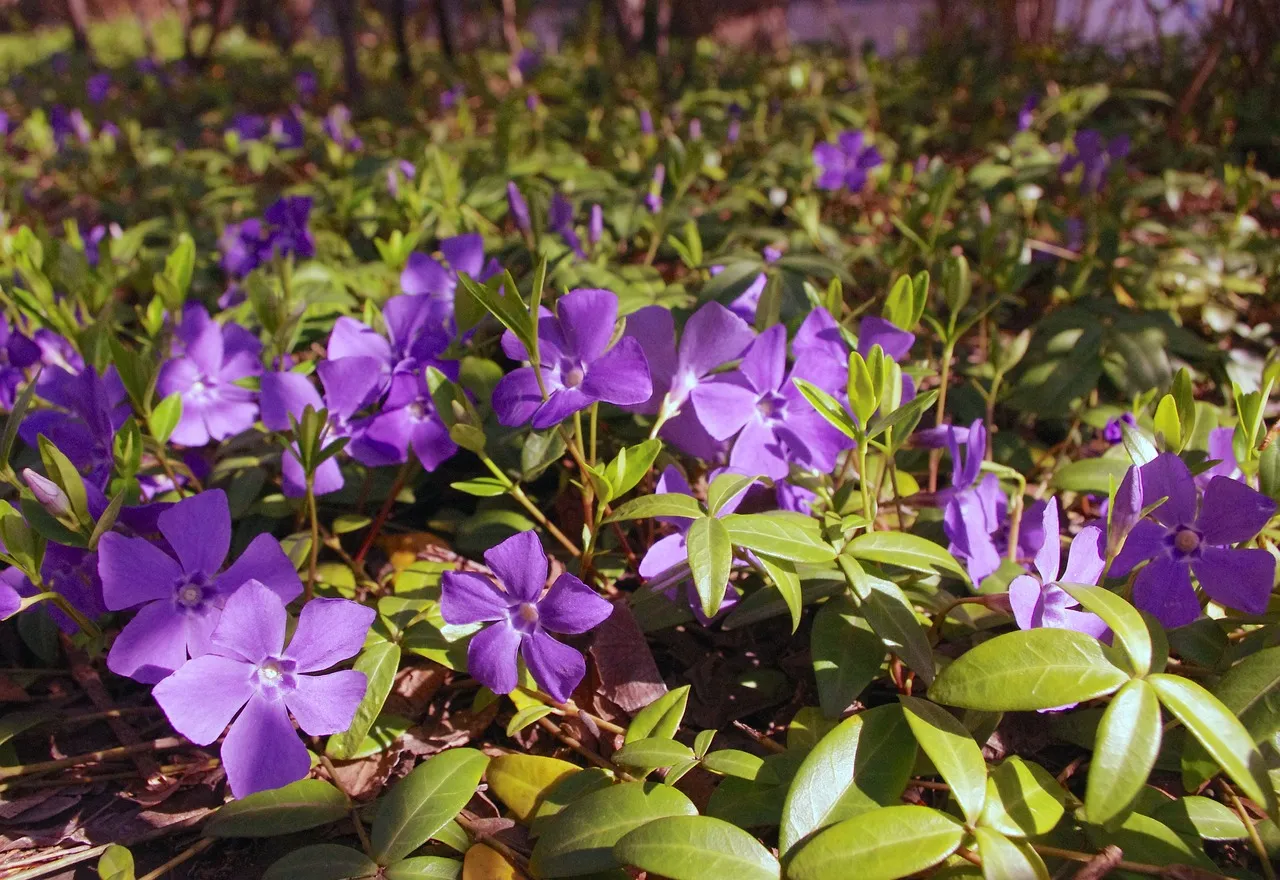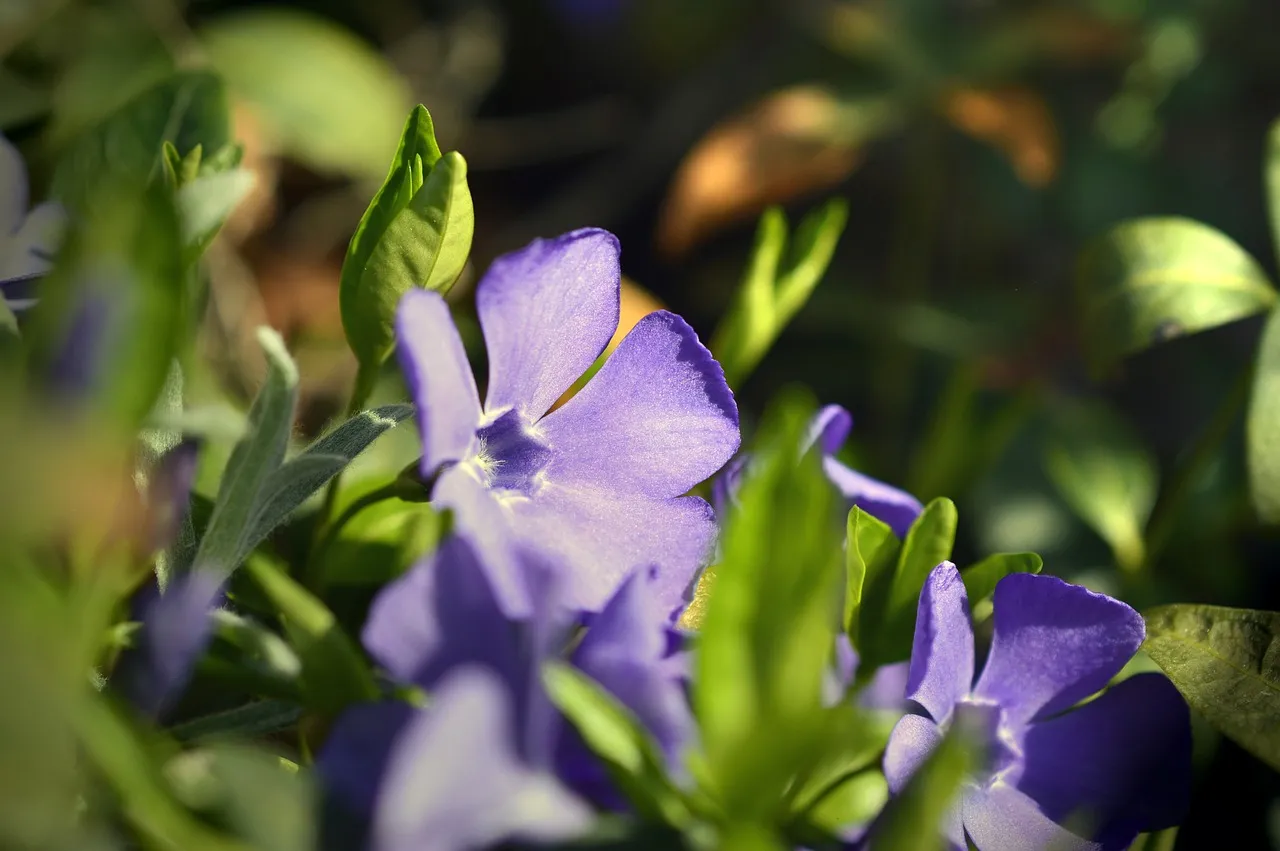Hi @bart
Many thanks for your question about Vinca minor, otherwise known as Periwinkle. This is a fabulous ground cover plant, great for covering large amounts of poor or awkward soil as it will tolerate most conditions.
The very quick answer is no. It won't kill off your perennial plants or even weeds. However, Vinca minor does drastically reduce weed seedlings from germinating by reducing the amount of open ground they need to root.

How to grow/Care for Periwinkle/Vinca minor
Vinca minor or the Periwinkle is one of the most low fuss plants. It will tolerate sun or shade and a variety of soil types. One of the few plants to tolerate all soil types including heavy clay.
It creeps along the ground helping to suppress weeds but not kill off other perennials that have already been established. This is because they already have enough growing power to push through. It may reduce their spread slightly, but I've never found this to be a problem Bart.
It flowers in spring with blue or purple flowers and has evergreen small tear-shaped leaves. They can also flower in the summer in certain climates.
Is Vinca minor a good low maintenance plant?
Absolutely. The other benefit of periwinkle is that its roots along its stems at the joins make it an excellent plant for propagating via division, but also it helps retain soil. Meaning that when planted on embankments and other exposed areas, it can help reduce soil erosion.
In fact, I saw it being used naturally in Cornwall on embankments to help retain the soil instead of a wall, clever huh!
How to split Vinca?
Once established, trace one of the stems along until you find it rooted midway. Then sever the stem 1 inch before this rooted section. Dig, lift and transplant with the new stem root in tact somewhere else in the garden. Water well, and you've suddenly got another Vinca! You can do this along each of the roots severing just before. Ideally, do this early morning or in the evening and transplant quickly!

When to plant periwinkle?
The best time to plant periwinkle is in the autumn, ready for the next year, but in my experience, plant it whenever other than heavy frost as it will survive and go nuts! Just ensure it's watered well, especially if planted under trees until it gets established.
https://youtu.be/h7DfM3xqfR4
Is Vinca poisonous?
It is toxic to dogs, but so are many other plants. Most dogs know better than to digest large amounts of it. People worry a lot about poisonous plants and toxic plants. However, this is a defence mechanism of plants against being eaten, chewed or ravaged by wildlife. Most give off a scent or immediate taste that warns of danger. So I'd like to help keep people calm that toxic plants don't need to be avoided altogether, a tulip bulb is toxic, but people don't panic so much about these!
Hope that helps you keep your Vinca Bart as it's super a fabulous and useful plant!
Happy gardening.
Lee
Hi @bart
Many thanks for your question about Vinca minor, otherwise known as Periwinkle. This is a fabulous ground cover plant, great for covering large amounts of poor or awkward soil as it will tolerate most conditions.
The very quick answer is no. It won't kill off your perennial plants or even weeds. However, Vinca minor does drastically reduce weed seedlings from germinating by reducing the amount of open ground they need to root.

How to grow/Care for Periwinkle/Vinca minor
Vinca minor or the Periwinkle is one of the most low fuss plants. It will tolerate sun or shade and a variety of soil types. One of the few plants to tolerate all soil types including heavy clay.
It creeps along the ground helping to suppress weeds but not kill off other perennials that have already been established. This is because they already have enough growing power to push through. It may reduce their spread slightly, but I've never found this to be a problem Bart.
It flowers in spring with blue or purple flowers and has evergreen small tear-shaped leaves. They can also flower in the summer in certain climates.
Is Vinca minor a good low maintenance plant?
Absolutely. The other benefit of periwinkle is that its roots along its stems at the joins make it an excellent plant for propagating via division, but also it helps retain soil. Meaning that when planted on embankments and other exposed areas, it can help reduce soil erosion.
In fact, I saw it being used naturally in Cornwall on embankments to help retain the soil instead of a wall, clever huh!
How to split Vinca?
Once established, trace one of the stems along until you find it rooted midway. Then sever the stem 1 inch before this rooted section. Dig, lift and transplant with the new stem root in tact somewhere else in the garden. Water well, and you've suddenly got another Vinca! You can do this along each of the roots severing just before. Ideally, do this early morning or in the evening and transplant quickly!

When to plant periwinkle?
The best time to plant periwinkle is in the autumn, ready for the next year, but in my experience, plant it whenever other than heavy frost as it will survive and go nuts! Just ensure it's watered well, especially if planted under trees until it gets established.
Is Vinca poisonous?
It is toxic to dogs, but so are many other plants. Most dogs know better than to digest large amounts of it. People worry a lot about poisonous plants and toxic plants. However, this is a defence mechanism of plants against being eaten, chewed or ravaged by wildlife. Most give off a scent or immediate taste that warns of danger. So I'd like to help keep people calm that toxic plants don't need to be avoided altogether, a tulip bulb is toxic, but people don't panic so much about these!
Hope that helps you keep your Vinca Bart as it's super a fabulous and useful plant!
Happy gardening.
Lee
 Lee Burkhill: Award Winning Designer & BBC 1's Garden Rescue Presenters Official Blog
Lee Burkhill: Award Winning Designer & BBC 1's Garden Rescue Presenters Official Blog



